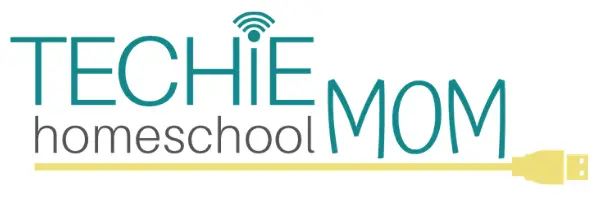Best Reading Apps for 2nd Graders {and Why You’ll Love Them!}
Hey, just so you know … This post includes affiliate links. That means if you use them to make a purchase, I may earn a commission. You can read my full affiliate disclosure HERE.
Have you ever wondered how to turn your child into a voracious reader?
Reading is a cornerstone of early education, laying the foundation for lifelong learning and curiosity. As homeschool moms, we know how crucial it is to cultivate strong reading skills in our young learners. That’s why we use every tool at our disposal to ensure kids not only develop this skill but also fall in love with reading.
Thankfully, tech to the rescue! In this digital age, technology offers many tools to enhance and enrich the reading experience.

Did you know that reading apps are among the most popular educational tools for kids? According to a study published in Sage Journals, about 72% of the most popular educational apps support early literacy skills. But not all apps are created equal; in fact, another study found that 58% of the apps we give our kids are low quality.
What a bummer.
So, the purpose of this post is to provide you with a curated list of the best reading apps for 2nd graders, making it easier for you to incorporate technology into your child's learning routine.
Choosing the Best Reading Apps
Choosing the right reading app can feel overwhelming with so many options out there. To make it easier for you, here are some key criteria to keep in mind when choosing your educational apps:
Age-Appropriate Content
The app should offer content that’s just right for young children, aligning with their reading level and interests. This ensures the material is neither too easy nor too challenging, keeping your child engaged and excited about reading.
Educational Value and Alignment with Curriculum Standards
Ensure the app supports educational goals and aligns with your homeschool curriculum of choice. Apps that are educationally sound help reinforce what your child is learning in their 2nd grade lessons, making it a great way to complement their education and ensure they are meeting key learning milestones.
User-Friendly Interface
A simple, intuitive interface makes it easier for young readers to navigate the app independently. This encourages self-directed learning and boosts their confidence as they manage the reading activities and fun games without needing constant supervision. It’s all about empowering them to take charge of their learning!
Engaging and Interactive Elements
Look for apps that incorporate interactive games, quizzes, and animations. These features turn learning into a fun activity rather than a chore, enhancing retention and comprehension. When kids have fun, they learn better and are more likely to stick with it.
Positive Reviews and Ratings
Check the app store for reviews and ratings from other parents and educators. This feedback can give you a better idea of the app’s strengths and potential drawbacks, helping you make a more informed decision. It’s like having a community of advisors right at your fingertips.
Cost and Availability (Free App vs. Paid Apps)
Consider whether the app offers a free version or requires a subscription and in-app purchases, and whether the cost aligns with your budget. Understanding the financial commitment ensures that you can provide continuous access to the app if it proves beneficial, without unexpected costs becoming a barrier to your child’s learning.
Top 8 Reading Apps for Second Grade
Now that we know what to look for in a reading app, let's see some of the best apps available for reading skills. I chose the apps designed to enhance your child's reading skills while making learning a fun and engaging experience.
I've tried a number of these and can vouch for their effectiveness in keeping young minds excited about reading, but always keep in mind children are different and learn in different ways, so it’s good to test these out yourself and choose the ones that work best for your family.
So here are my favorite 8 apps for reading and encouraging a love for reading:
Epic!
- Description: Epic! offers an extensive digital library with thousands of books tailored to young readers. It's like having a whole library at your fingertips.
- Key Features: Personalized recommendations based on your child's interests, a read-to-me feature for younger kids, and quizzes to test comprehension.
- Pros and Cons: One of the best parts of Epic! is the variety of books available, from educational titles to fun stories. Parental controls help you manage what your child reads. However, it does come with a subscription cost after a free trial. For us, it’s been worth every penny given the extensive content. Click here for 1 free month of Epic! for your family.
Starfall
- Description: Starfall combines interactive lessons with educational games, focusing on phonics and early reading skills.
- Key Features: Phonics-based learning, engaging animations, and progress tracking. It’s particularly good for reinforcing what they’ve already learned.
- Pros and Cons: The animations and interactive elements keep kids engaged, making learning feel more like play. However, only some content is free, and you might need to pay for full access.
Reading Eggs
- Description: This app focuses on phonics and sight words, offering interactive activities to make learning to read enjoyable.
- Key Features: It has a reward system to motivate kids, structured lessons to guide their learning, and detailed progress reports that parents will love.
- Pros and Cons: The gamified learning approach really keeps kids engaged, and as a parent, I appreciate the detailed progress reports. The downside is the subscription fee, but considering the quality of the content, it’s a valuable resource.
ABCmouse
- Description: ABCmouse provides a full curriculum that covers reading, math, science, and art. It’s like an all-in-one educational platform.
- Key Features: A step-by-step learning path that guides your child through different subjects, and certificates of achievement that keep them motivated.
- Pros and Cons: The comprehensive curriculum and customizable avatars make learning fun and personalized. However, there is a cost after the trial period. Click here for a 30-day free trial!
Homer Reading
- Description: Homer Reading offers a personalized reading program tailored to your child's interests, which keeps them more engaged.
- Key Features: It includes stories, songs, and phonics games that adapt to what your child likes.
- Pros and Cons: The personalized content and progress tracking are fantastic for keeping kids interested and parents informed. The subscription fee might be a consideration, but it's a worthwhile investment for tailored learning. Click here for a 45-day FREE trial, PLUS $10 off your annual subscription.
Raz-Kids
- Description: Raz-Kids provides leveled books and interactive quizzes to support reading comprehension.
- Key Features: Hundreds of eBooks, comprehension quizzes, and a rewards system that keeps kids motivated.
- Pros and Cons: The leveled reading system is great for ensuring kids are reading at the right level, and the teacher management tools are useful for parents, too. It does require a subscription, but the comprehensive approach to reading makes it worth considering.
FarFaria
- Description: FarFaria offers interactive storybooks that children can read or listen to.
- Key Features: Read-to-me narration and offline reading capabilities, which are great for on-the-go learning.
- Pros and Cons: The large library and easy navigation make it user-friendly. However, free access is limited, and full access requires a subscription.
Teach Your Monster to Read
- Description: This app uses a game-based approach to teach phonics and reading.
- Key Features: Game-based learning with progression through different levels that keep kids motivated.
- Pros and Cons: It’s fun and engaging for young readers, and it only requires a one-time purchase. Some might find it too game-like, but for many kids, this is exactly what makes it so appealing.
These apps are some of the best ways to add some sparkle to your child's reading journey, offering a mix of educational value, engagement, and convenience.
Each one has its own strengths, so I encourage you to explore and find the one that best fits your child's needs and interests.
Tips for Using Reading Apps Effectively
Using reading apps can be a really useful hack in your homeschool, but it's essential to use them effectively to maximize their benefits. Here are some tips that have worked wonders for us:
Setting a regular reading schedule: Consistency is key. Establish a daily or weekly schedule for your child to use the reading apps. This helps create a routine and ensures that reading becomes a regular part of their day. Whether it's 15 minutes before bed or 30 minutes after lunch, find a time that works best for your family.
Combining app use with traditional reading methods: While apps are fantastic tools, they should complement, not replace, traditional reading methods. Encourage your child to read physical books and have story time together. This balance helps reinforce their learning and provides a more well-rounded reading experience.
Monitoring progress and adjusting difficulty levels: Many of these apps offer progress tracking and adaptive learning paths. Regularly check your child’s progress and adjust the difficulty levels as needed. This ensures they are always challenged but not overwhelmed. Celebrate their milestones to keep them motivated.
Encouraging discussions about stories and books read: After your child finishes a story or completes an activity on the app, take some time to discuss it with them. Ask questions about the story, their favorite parts, or new words they learned. This reinforces comprehension and makes reading a shared, interactive experience.
Balancing screen time with other educational activities: While these apps are educational, it's important to balance screen time with other learning activities. Include hands-on projects, outdoor play, and creative activities in your homeschool curriculum.
What’s Your Take?
What's your take on this? Do you believe using reading apps can really amp up your child’s reading skills and turn them into enthusiastic readers?
Remember, every child is different. What works wonders for one might not be the best for another. I encourage you to explore these apps and find the perfect fit for your child's interests and needs. With the right tools and a balanced approach, you can use these apps to their full potential and hopefully your children will develop a taste for reading that will stay with them forever.
So what are your favorite reading apps? Have you tried any from this list, or do you have other recommendations? Share your thoughts in the comments below! Let’s help each other find the best ways to support our young readers on their journey to becoming voracious readers.

Related Posts
- What are the Best Reading Apps for Kids?
- 20 Best Fiction Books for Kids Who Love Science and Tech
- How to Use Your Kindle for Homeschooling

Want some techie homeschooling tips and inspiration delivered to your inbox? Sign up here for weekly-ish emails from me.
Techie Homeschool Mom is a participant in the Amazon Services LLC Associates Program, an affiliate advertising program designed to provide a means for sites to earn advertising fees by advertising and linking to Amazon.com. You can read my full affiliate disclosure HERE.










